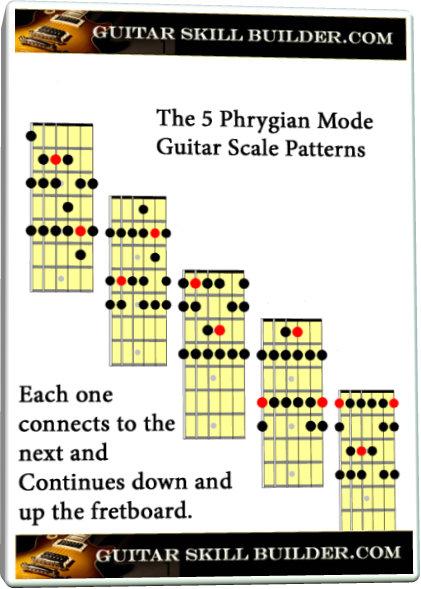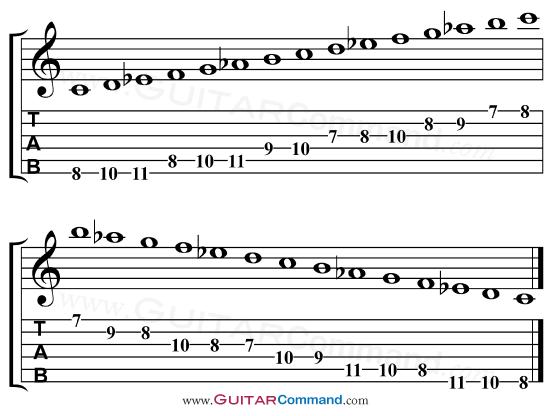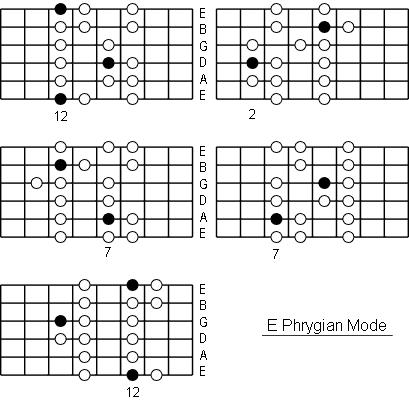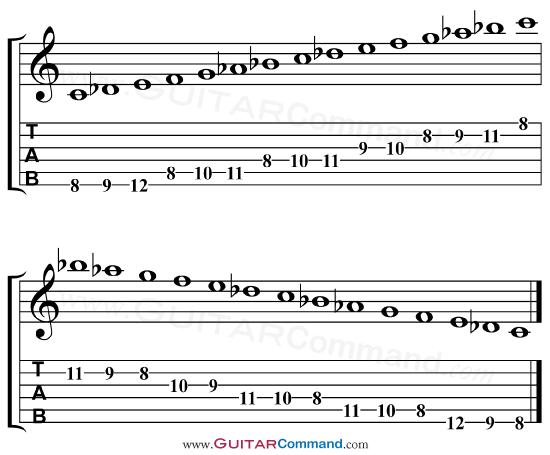I remember the first time I laid hands on a Spanish guitar, my fingers tracing over the pristine strings, unaware of the melody they were capable of conjuring. I was entranced by the beauty of its design, but I had yet to discover the true magic it held — the Spanish guitar scales. That day marked the beginning of a profound musical journey, a voyage into the heart of Spanish music that would forever change how I viewed not just the guitar, but music as a whole.
A year of self-discovery ensued with these Spanish scales as my blueprint, guiding me through every chord, every note, painting the vibrant pictures of Spanish music with my fingertips. Yet the climax of my venture is not a tale for this introduction. It’s a story for another chapter of this comprehensive guide, a tale forged across numerous sections, each unveiling a new facet of mastering Spanish guitar scales.
The Spanish guitar scales are the secret ingredients concealed in the soulful melodies of Flamenco and the euphony that resonates within the Spanish music genre. These scales serve as stepping stones, leading your way through the melodic labyrinth of Spanish music, illuminating your path as you delve into the Diatonic and A Harmonic Minor Scales, wade through the E Phrygian Scale, and explore the Spanish 8 tone.
But merely comprehending these scales isn’t enough to manifest the enchanting essence of Spanish music. To truly master them, you need to integrate them into improvisation, understand the chord progression, and learn to play these scales with as much heart as the guitarists who’ve breathed life into Spanish music for centuries.
Are you ready to embark on this musical journey? Do you dare to traverse the labyrinth of the Spanish guitar scales and witness the transformation they will elicit in your music? If so, let’s delve into the details, pulling back the curtain to reveal the world that lies within the melodies of Spanish music.
Exploring Different Guitar Scales in Spanish Music
Understanding the Phrygian Mode

Having explored different guitar scales in Spanish music, it’s time to delve into one of the most integral sounds, the Phrygian mode. This mode contributes heavily to the enigmatic allure of Spanish music, and understanding it is key to mastering Spanish guitar scales.
The Phrygian mode, a minor scale variation, is characterized by its distinctive ‘Eastern’ sound. Its defining feature is the minor second interval – a half-step from its root note – creating a stark, powerful tension distant from the familiar major scale. This makes the Phrygian mode an essential part of Spanish music’s rich tapestry.
Undefined – a term that beautifully encapsulates the mysterious and emotive nature of the Phrygian mode. As we progress through our exploration of Spanish guitar scales, understanding this mode’s intriguing properties remains crucial. Grasping its structure and learning to manipulate its remarkable tension will equip you with the capacity to infuse your improvisation and compositions with iconic Spanish flare.
As we transition into detailed examinations of other scales, such as Flamenco and Diatonic, and discover their significant roles, bear in mind that Phrygian mode’s distinguished, engaging presence. This knowledge deepens our comprehension of Spanish music’s intricate, captivating structures and adds another dimension to our mastery of the Spanish guitar scale.
Discovering the Flamenco Guitar Scales

As our musical journey deepens, we come upon the enchanting realm of flamenco guitar scales. A pivot point in the panorama of Spanish guitar music, these scales form the heart of the flamenco style, exuding raw emotion and intensity.
Audacious and expressive, flamenco guitar scales wonderfully expand the sonic possibilities beyond ordinary boundaries. Their rich, varied tones craft a unique auditory landscape, underpinning the allure of Spanish music. Offering a delightful array of sounds, these scales act as keys, unlocking new creative avenues to explore, and contributing significantly to the diversity within the Spanish guitar tradition.
The flamenco guitar scales are steeped in a long and dynamic history, they are the carriers of an ancient musical vocabulary, encapsulating a deep cultural and historical essence. Flamenco guitar scales have an innate capacity to communicate palpable tension, thrilling drama, and profound sorrow. The flamenco scales’ distinct melodic contours and rhythmic vitality are instrumental in shaping the ebbs and flows of Flamenco music.
By understanding these scales, we not only enhance our guitar skills but also deepen our connection to the spirit of Spanish music. Navigating through the flamenco guitar scales would guide us deeper into this enticing world, leaving us better equipped to tap into the essence of Spanish music and unlock its true power.
Delving into the Diatonic and A Harmonic Minor Scale

As we delve into the diatonic and A harmonic minor scale, we uncover the musical paths that guide the emotional narrative of Spanish guitar music. Our exploration has thus far introduced us to various scales that vibrate with passion and pulse with life. However, the diatonic scale and A harmonic minor scale introduce a unique depth to this exquisite musical landscape.
The diatonic scale, fundamental in much of Western music, is also pivotal in Spanish music. Its relevance spans multiple genres, from Flamenco to Classical. Mastery of this scale unlocks harmonic possibilities, establishing a basis for more complex melodies. On the other hand, the A harmonic minor scale is not merely a variant of the minor scale. Spanning seven notes, its potential lies in the distinctive tension between its 7th and 8th notes, a characteristic harnessed heavily in Spanish music.
Incorporating these scales into our practice will not only contribute to a broader repertoire but also enrich our understanding of Spanish music’s richly textured fabric. The essence of mastering Spanish guitar scales is not in mere memorization, but in understanding their musical implications, a quest that continuous exploration will undoubtedly satisfy.
So, lose yourself in the labyrinth of beautiful sounds that the diatonic and A harmonic minor scale unfurl and transform your Spanish guitar music journey into a thrilling voyage of musical discovery.
Examining the E Phrygian Scale

The exploration of various Spanish guitar scales continues, and so we arrive at the E Phrygian scale. This fascinating scale is an embodiment of the fiery essence typically associated with Spanish music, lending a unique, exotic flavor that flamenco, in particular, has capitalized on. The E Phrygian provides a remarkable pitch-set, largely responsible for the enigmatic and haunting allure of certain Spanish musical genres.
The E Phrygian scale, derived from the C Major scale, is rich in its harmonic potential, giving Spanish music its standout mystique. Positioned as the third mode, it exudes a minor tonality that is central to the moody, passionate, and often melancholic vein that runs deep in Spanish music. In an octave, its note pattern is E – F – G – A – B – C – D, its peculiarity emanating from the half-step between E and F.
The sonic texture this scale offers becomes pivotal, not just for its individual allure, but for its contribution to wider discussions surrounding the distinctiveness of Spanish guitar music. As we journey deeper, the vibrant potential of such scales is unmistakable. We’re indeed venturing into the visceral soul of Spanish music, with the E Phrygian scale as an entrancing guide. The exploration of Spanish guitar scales, manifestly, is a tasteful exploration of a rich cultural heritage.
How to Play Spanish Guitar Scales
Using Guitar Tabs and Notation

Delving further into our exploration of playing Spanish guitar scales, let’s focus on a critical tool that will undoubtedly enhance your learning experience – guitar tabs and notation. Often sidelined by some modern teaching methods, these traditional resources hold an indispensable place in our study. The ineffable artistry embedded in the sound sequences of Spanish guitar scales is most vividly depicted through these intimate scribblings, enriching our grasp over rhythm, tone, and technique.
Guitar tabs, or tablature, offer a practical way to read music, especially for those less familiar with standard musical notation. Each line in a tab represents one of the six strings on a guitar, with numbers signifying the frets to play. Unlike traditional notation, tabs display exactly where to place your fingers, making them a fantastic, straightforward tool in learning new scales and pieces.
Meanwhile, traditional notation, often deemed daunting for beginners, is a treasure trove of knowledge that should not be shied away from. It’s a universal language most musicians swear by and can reveal valuable insights about the melody melange of Spanish guitar scales – for instance, the intensity and the duration of each note. Mastering notation, combined with tabs, unleashes a newfound harmony in your repertoire. The intricate weaves of Spanish guitar scales start presenting themselves more transparently, paving the path for both proficiency and discovery.
Now, why is this important? It’s simple. Spanish guitar scales, like the Phrygian mode or the flamenco scales, have unique rhythmic patterns and techniques that might not be effectively illustrated through word-of-mouth or video tutorials alone. The tactile details, once documented in the form of guitar tabs and notation, pave a clear path of learning, reinterpretation, and in turn, improvisation.
Using guitar tabs and notation to delve into scales like the A Spanish 8 Tones scale or the E Phrygian scale, for instance, can stimulate a deeper understanding of these sounds, enabling you to visualize and master them proficiently. The relationship of scales to the chords in Spanish music too, are more understandable when viewed through this lens. Even for those who primarily rely on ear training, this study can provide valuable insights, exemplifying the saying, “The ear is a great tool, but the hand holds the key.”
To conclude, investing time and effort in understanding guitar tabs and notation can be a game-changer in your Spanish guitar journey. It’s akin to uncovering an intimate roadmap that guides, inspires and provides a vista of artistic possibilities. As we inch closer to discussing Spanish guitar scales’ role in improvisation, having a firm foundation in tabs and notation will prove essential. More than a step, it’s a leap towards becoming a proficient Spanish guitar player and letting the magic of Spanish guitar scales echo in your music.
Visualizing with Diagrams

The power of visualization cannot be overstated, especially when learning Spanish guitar scales. Utilizing diagrams allows us to comprehend intricate concepts in an effortless, visually compelling manner. Grappling with ascending and descending sequences, or varying intervals between notes, can be taxing, but diagrams bring that needed clarity and simplicity.
Having mapped Spanish scales in the prior sections, and understood the Phrygian mode not just as an abstract concept but as the soul and essential sound of Spanish music, we now turn to diagrams for better grip. They go beyond mere mechanical memorization, serving as visual cues that anchor your finger positioning and movement across the fretboard, and enable you to visualize the scale pattern before even touching your guitar strings.
In the context of Spanish guitar scales like the Flamenco, the diatonic, and A Harmonic minor scales, diagrams not only provide a convenient reference tool for practising but capture the ‘tonal colour’ of each scale. They give a spatial representation of how individual notes contribute to that distinct Spanish vibe.
Depending on the scale, you’ll note varying degrees of tension (via the tonal relationships within a scale) and release. All this, while seemingly complex, is effortlessly conveyed via a well-designed diagram. In short, diagrams are instrumental in helping you grasp the sound, feel, and texture of the Spanish guitar scales. And as we move forward to explore the A Spanish 8 tones, you’ll appreciate the indispensable role diagrams play in seizing not just the technique but the very artistry of Spanish guitar playing.
Mastering the A Spanish 8 Tones

Delving deeper into the art of Spanish guitar scales, we arrive at an interesting chapter – ‘Mastering the A Spanish 8 Tones‘. As a guitarist, understanding and adapting to different tones is crucial for versatility, but the significance of ‘A Spanish 8 Tones’ scales lies in their distinctive flamenco character. This exceptional quality imparts an authentic Spanish flair to your guitar playing repertoire. Let’s discover how.
So, what exactly are ‘A Spanish 8 Tones’? Well, they are a unique combination of notes, each with its own texture that contributes to the overall ambiance of a piece. The beauty of these scales is their harmonic diversity, encompassing a wide range of sounds -from the melancholic to the vivacious. Practicing these scales enhances finger dexterity, promotes note recognition, and fosters musical creativity through explorations in tonal variety.
The process of mastering these scales encourages a shift in mindset from mere note recital to vibrant music creation. Every note now swells with potential to influence the narrative of your musical piece. This represents the authentic power of ‘A Spanish 8 Tones’, a gateway to the heart of Spanish music culture and a tool to enrich your musical expression.
By sharpening your skills on ‘A Spanish 8 Tones’, you’re connecting with a rich musical heritage, refining your technique, and expanding your creative landscape. Now, let’s move on to the thrilling process of incorporating these scales into improvisations and musical pieces, ensuring we are truly harnessing the full potential of Spanish Guitar Scales.
Using Spanish Guitar Scales in Improvisation and Music
Integrating Scales into Improvisation

As we delve deeper into using Spanish guitar scales in improvisation and music, it becomes imperative to understand the important role of integrating these scales into your improvisational skills. Why? Simply because, as many profound musicians would attest, ardently being able to improvise is a testament to one’s mastery of an instrument.
Undefined by the rigid norms of compositional rules, flamenco and Spanish guitar music often dance to a different beat. The capriciousness of improvisation unravels the raw essence of Spanish guitar music, often accentuated by the poignant sequences of Spanish scales. Spanish guitar scales, with their characteristic accidentals and intriguing modes, offer plenty of sonic textures for you to explore and incorporate into your improvisation.
Understanding and embodying the scales associated with Spanish guitar music are critical when it comes to improvising. These scales help broaden your horizon, allowing you to reach emotional depths otherwise untapped. Consequently, the use of these scales could just be the missing piece you need to elevate your improvisation prowess!
The intoxicatingly rich notes of the Phrygian mode, the intricate labyrinth of the A Spanish 8 Tones, or the intriguingly subtle touches of the Diatonic and Harmonic Minor scales; these are no longer just scales but powerful tools at your disposal. By integrating these scales into your improvisation, you become boundless and undefined, swirling in the vibrant dance of Spanish guitar music, creating profound melodies mirroring the intensity and passion of flamenco dancers in full flare!
Thus, as we move forward with our exploration of Spanish guitar scales, mastering the improvisational application of these scales will undoubtedly be a cornerstone of your journey. Stay tuned as we delve deeper into this exciting journey of musical self-discovery.
Understanding Chord Progression in Spanish Music

As we delve deeper into the realm of mastering Spanish guitar scales, it becomes necessary to understand the significance of chord progression in Spanish music. Let’s pause for a moment here to consider what ‘undefined’ might mean in this context. Imagine a bustling flamenco dance, the stage set with passion, drama, and an undeniable rhythm. Yet, without the underlying structure provided by proper chord progression, even the most perfect mix of Spanish guitar scales would fail to captivate the audience or provide the integral musical backbone needed for improvisation.
An understanding of chord progression allows a musician to create arrangements that meld seamlessly with the evocative nature of Spanish music, emphasizing its unique rhythms and providing an emotive backdrop for lyrical storytelling or mesmerizing solos.
Chord progression is not merely an orderly arrangement of chords; it ensures the music flows coherently, directing listeners’ emotions, and setting the stage for melodic improvisations. In the context of Spanish music, particularly styles like flamenco, chord progression is a crucial tool for eliciting strong emotional responses, setting the tone of a piece, and even driving the narrative of a performance.
Adopting chord progressions rooted in specific Spanish guitar scales can dramatically enhance your improvisation skills, turning a series of notes into a resonant, captivating musical experience. It contributes meaningful depth to your music, broadening your improvisational toolbox and augmenting the drive and tension within your compositions.
So, as we continue our journey through mastering Spanish guitar scales, let your attention dwell on the power and importance of chord progression. Understanding its use within Spanish music will not only elevate your improvisational skills but also enrich your appreciation for the complexity and emotive power inherent in Spanish guitar music.
FAQs
What are Spanish guitar scales?
How many types of Spanish guitar scales are there?
How can I master Spanish guitar scales?
What are the benefits of mastering Spanish guitar scales?
Conclusion
Mastering Spanish guitar scales can profoundly change how you express yourself musically. Feel ready to embark on this exciting journey? The beauty of Spanish music lies within the profound depth of its guitar scales, and grasping their essence can truly transform your playing. We’ve explored various scales prevalent in Spanish music – from the Phrygian Mode to Flamenco Guitar Scales and even the A Spanish 8 Tones.
By understanding how to play these scales on your guitar, you will certainly enhance your ability to improvise and create captivating Spanish music. We’ve discussed various techniques, such as visualizing with diagrams and using guitar tabs and notation, to aid in this learning process. The role of scales in musical expression, particularly in chord progressions and improvisation, cannot be overstated.
In essence, these Spanish Guitar Scales are not just about the notes, they are about emotion and storytelling, about connecting on a profound, cultural level. I urge you to keep practicing, keep exploring, and you will discover the beautiful complexity and the heart-stirring simplicity of Spanish music.
May your journey into the world of Spanish guitar scale mastery be as enriching as the music itself!
